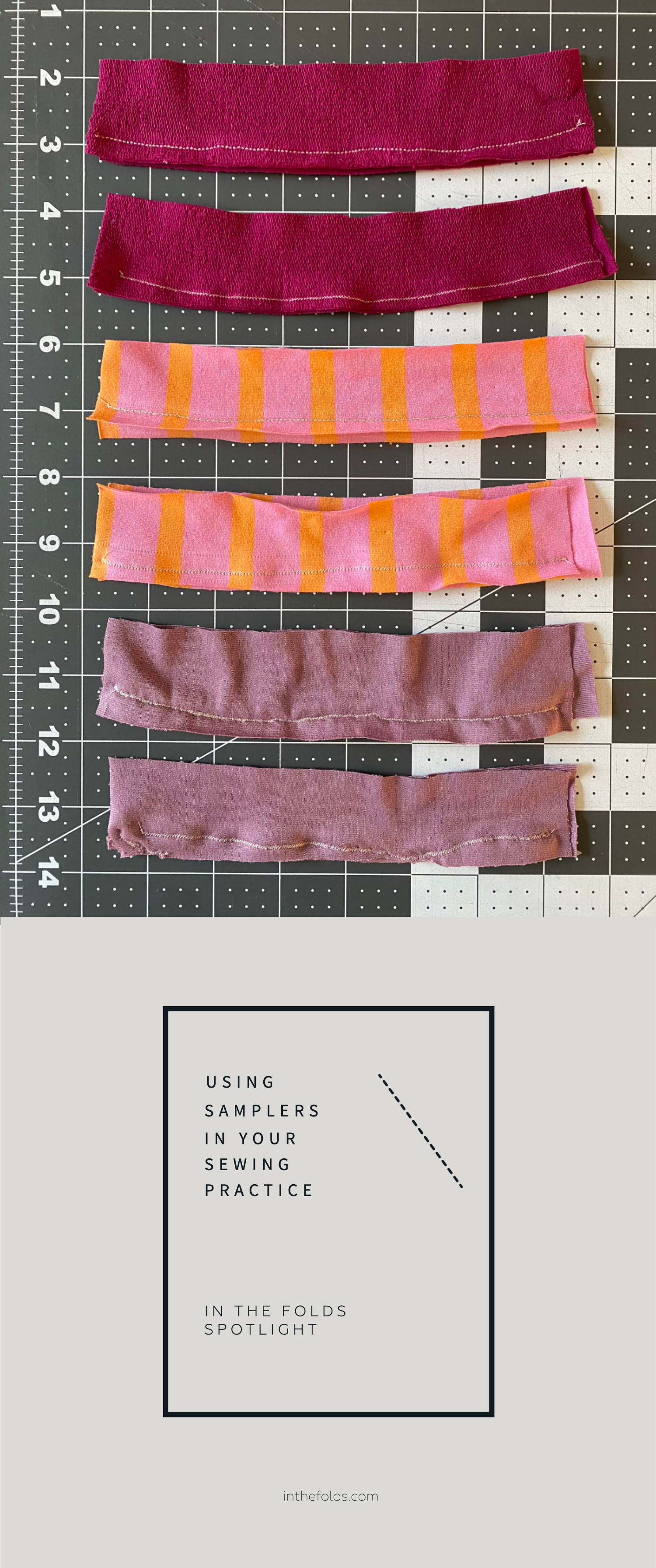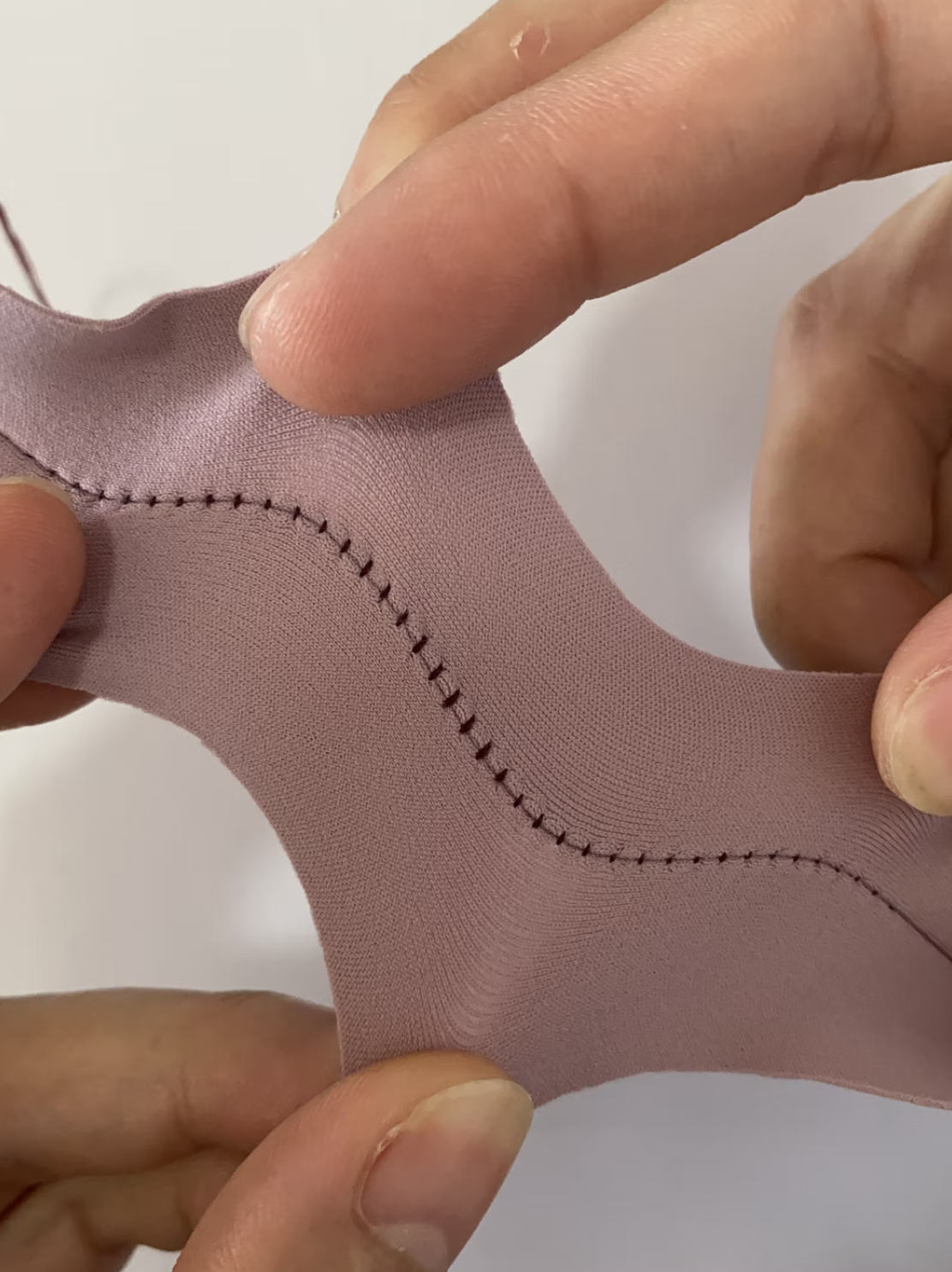Have you ever heard of sewing samplers?
You may be familiar with the idea of needlework samplers, which have been used for many years by makers as a reference for embroidery patterns or stitches they have learned, but you may not be quite so familiar with the use of samplers when making garments.
Similar to their use in needlework, garment sewing samplers are often using in industry for sewing small examples of techniques that are then used as a reference during the garment construction process.
Our Curated by ITF sewing subscription has a big focus on building our members’ skills and understanding of the garment making process, rather than just making more clothes for the sake of it. We want our makers to be completely happy with the garments they make. To be confident in applying different sewing techniques while improving their skills, so they create a finished garment they are proud of that gets worn over and over again. This is exactly why we’re big believers of using samplers in our home-based sewing practice!
the benefits of sewing samplers
Often, when we try a new technique or skill we launch right into making a garment using it because we’re excited. It’s usually AFTER we’ve cut into our ‘good fabric’ and started sewing that we realise we don’t know how to do it properly or to the standard we’d prefer. Or perhaps when we’ve finished making a garment we might realise we’re not happy with the finish, which then might affect how much wear the garment gets.
There’s lots of reasons why you should include sewing samplers in your practice. Here’s a few:
Because they’re small, samplers allow you to quickly practise and perfect new skills and techniques.
Samplers minimise waste because they are only a small portion of a garment (for example, an in-seam pocket), and because you are less likely to make mistakes if you’ve practiced before applying a technique to a garment you hope to wear.
They remove the pressure of getting it right the first time, because you’re not sewing an entire garment or using your ‘good fabric’.
Because you don’t wear them, they’re a great way of using up leftover fabric scraps. The fabric doesn’t have to match and can be patchworked together with a variety of fabric prints and colours.
They are a great way of making use of very small pieces of bias binding or interfacing, for example, that might otherwise get thrown in the bin.
One of the main benefits of samplers is that they are excellent references to return to if you need reminding of how to do a particular technique, or the approach you’ve decided you prefer to use. Keeping samplers means that you don’t have to rely on your memory or scribbled (and often unreadable!) notes you made in a hurry on a scrap of paper that’s now somewhere in a pile on your sewing table. These small examples can be stored easily with construction notes and used as a reference to inform future makes.
We used the samplers approach in our Pants Sewing Skills Kit and again in our Sewing Knits Skills Kit. Our members have loved including them in their sewing practice, so we thought we’d share some of their work to inspire you!
Join Curated by ITF - find your new community!
If you're looking to be supported, motivated and inspired through your sewing journey our Curated by ITF subscription might be just what you're looking for.
As well as a monthly sewing project, you’ll gain access to our private member platform where you can receive feedback and advice from the ITF team and other experienced makers, participate in sew-alongs and make sewing besties all over the world!
SHUAY’S stitch SAMPLERS
Shuay has spent a lot of time sewing with knit fabric and thought she had covered all the basics, but after reading through our Sewing Knits Skills Kit she realised there was a lot she didn’t know.
After learning about the stitches that mimic overlocking that can be found on regular domestic sewing machines, she started experimenting with samplers to figure out what stitch was the best option for the stretch fabrics she had in her stash. She found that depending on the fabric used, some stitches could be seen on the outside of the fabric once it was stretched, which is very important information to have when sewing with stretch fabric!
SUTHI’S seam samplers
Suthi experimented with the knit fabric in her stash by creating a range of knit fabric samplers that compared the finish she could achieve using different stitches with a walking foot on her 10 year old Brother domestic machine. Here’s what she sewed:
Top - Medium weight knit fabric with a triple stitch vs lightening bolt stitch.
Middle -Light weight knit fabric with a triple stitch vs lightening bolt stitch.
Bottom - Super light weight, drapey knit fabric with triple stitch vs lightening bolt stitch.
Suthi learned that even with the walking foot her fabric ‘grew’ up to 1cm in length and that she preferred the finished achieved using the triple stitch.
using our knit sampler patterns: emily’s experience
Inside this month’s Sewing Knits Skills Kit and the Pants Sewing Skills Kit we include patterns for knit samplers that allow you to practice particular elements of a T-shirt pattern (because next month we’re releasing the Kealy T-shirt pattern in our subscription!) and some basic skills required for sewing with knit fabric.
Emily used the patterns to create a range of samplers to test various settings on her domestic sewing machine, as well as practice the different techniques we cover in the Skills Kit.
Based on the experience she had sewing these samplers, Emily could see what she needed to practice more to get the finish she wanted, and was able to ask questions in our online community that helped her improve her technique. She’s now feeling confident to tackle next month’s Curated by ITF project, the Kealy T-shirt pattern and we’re waiting with baited breath to see what she creates!
We love seeing our community members becoming confident garment makers, and we hope by sharing these member experience we can encourage you to continue growing your own garment making skills.
If becoming a confident maker is something you want to achieve, you should definitely consider subscribing to Curated by ITF, where you will gain the support of professional garment makers with years of industry experience, as well as be inspired by a community of makers just like you!
Happy sewing!
Xanthe












